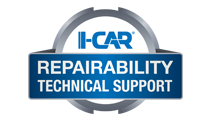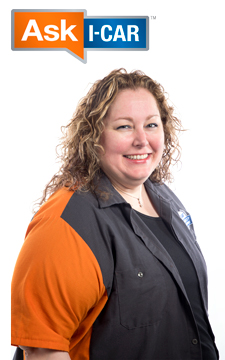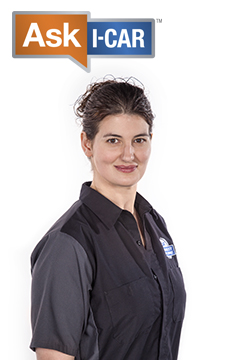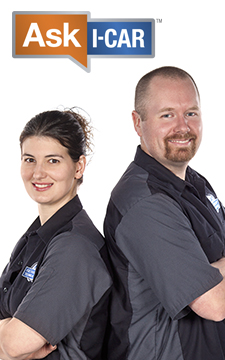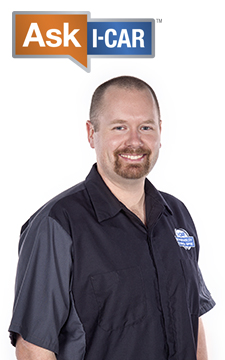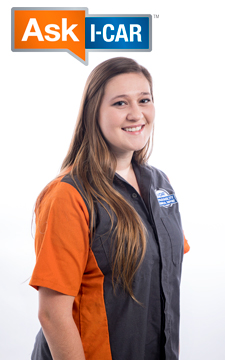Mazda I-ELOOP Overview
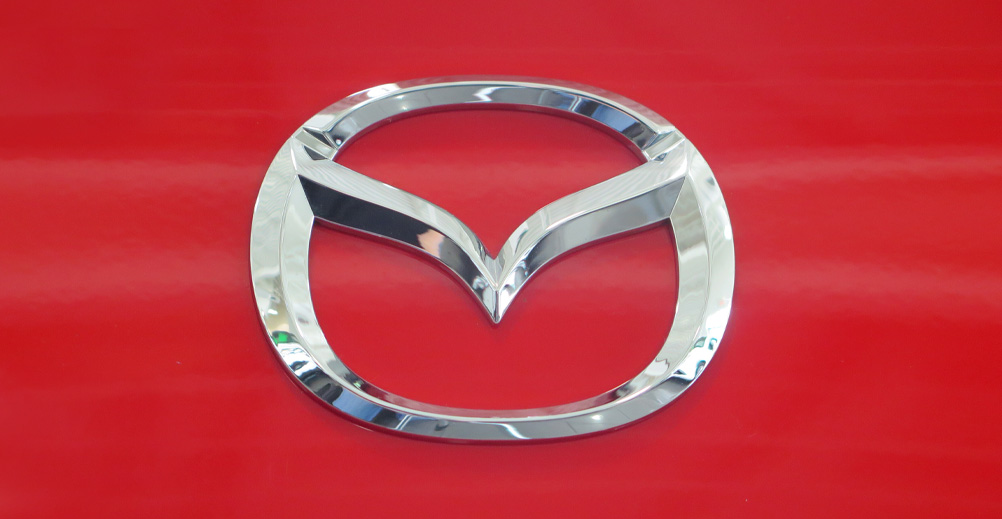
Beginning model year 2014, Mazda has introduced a regenerative engine braking system called i-ELOOP, short for "Intelligent Energy Loop." In this system, a capacitor is used to store electrical energy generated during deceleration. In a conventional system when the vehicle slows or stops, energy is wasted. The i-ELOOP system uses a unique variable voltage alternator that can produce up to 25 volts during deceleration. The electricity that is generated during deceleration is not sent directly to the vehicle's battery, because the battery cannot store more than 12 volts. Instead, the capacitor stores the electricity, up to the 25 volts produced by the alternator. The capacitor then readily discharges it through a voltage reduction circuit to power vehicle accessories.
How does this affect collision repair?
The capacitor is located behind the front bumper on the left side. Given this placement the capacitor may require R&I even in smaller collisions to repair other damaged areas. The capacitor holds high-energy up to 25,000 joules,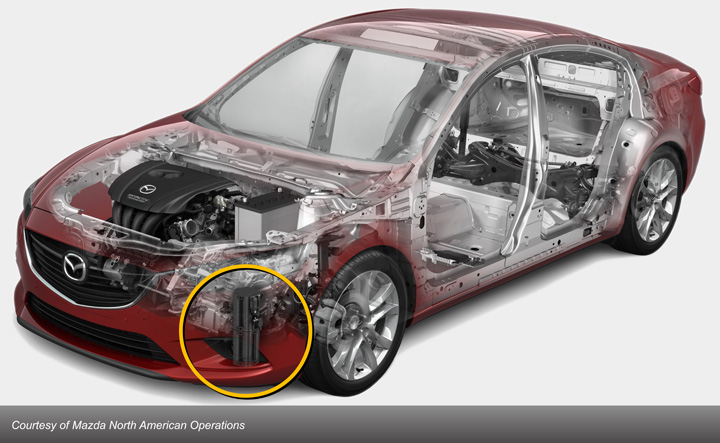 The vehicle should never be started without the capacitor in place.which may cause serious harm to servicing personnel or to the vehicle itself. Before removing the capacitor or touching any of the high-energy i-ELOOP connections, a service plug disconnect must be utilized. This will prevent shock or electrocution and the possibility of fire. If the capacitor is replaced, the damaged one must be fully discharged before disposal, and then discarded in compliance with local e-Waste regulations. Before installing a new capacitor, a jumper wire that is used during transport to prevent static charge build-up must be removed. If the jumper wire is not removed it will create a short circuit to ground within the i-ELOOP system.
The vehicle should never be started without the capacitor in place.which may cause serious harm to servicing personnel or to the vehicle itself. Before removing the capacitor or touching any of the high-energy i-ELOOP connections, a service plug disconnect must be utilized. This will prevent shock or electrocution and the possibility of fire. If the capacitor is replaced, the damaged one must be fully discharged before disposal, and then discarded in compliance with local e-Waste regulations. Before installing a new capacitor, a jumper wire that is used during transport to prevent static charge build-up must be removed. If the jumper wire is not removed it will create a short circuit to ground within the i-ELOOP system.
The i-ELOOP capacitor is a "wet type" capacitor, and must be stored upright to prevent electrolyte leaks, which will damage the capacitor. Also, never use a new or used capacitor that has been dropped or otherwise damaged.
Mazda provides i-ELOOP repair and handling procedures that can be accessed at www.mazdaserviceinfo.com, and click-on the link for the Capacitor Disposal Manual.
Can I drive the vehicle without the capacitor installed?
Due to the way the i-ELOOP capacitor is connected, it is NOT recommended to start or run the vehicle without the capacitor in place. Pushing the vehicle however will not charge the i-ELOOP capacitor; therefore pushing a collision-damaged vehicle around a repair facility is permitted.
What about the battery?
Even though the battery is 12 volt, it is specifically designed for use with the i-ELOOP system. It's designated as a Q85 type battery, and is currently only available through Mazda. When replacing an i-ELOOP equipped vehicle's battery, be sure to install the correct Q85 type battery.
There are special procedures for jump starting, disconnecting and charging the Q85 battery. An i-ELOOP equipped vehicle can be jump-started, but the vehicle must not be driven until an in-dash i-ELOOP warning display turns off. Before disconnecting an i-ELOOP equipped vehicle's battery, a "current sensor" must be disconnected from the negative terminal. Failure to first disconnect this sensor can cause false sensor readings and set diagnostic trouble codes (DTCs). When reconnecting the battery terminals, first connect the positive terminal, and then the negative terminal without the current sensor connected. Finally reconnect the current sensor to the negative terminal.
Due to the internal design of the Q85 battery, the battery cannot be successfully quick charged. Quick charging will also cause internal damage to the battery. If the battery needs to be recharged, it should be done outside the vehicle, battery caps removed, and in a pan containing 11/2 - 2" of water to prevent battery overheating. Mazda Service Information provides complete and precise Q85 battery testing and recharging procedures that should be followed to guarantee proper battery service.
Can the bake cycle damage the capacitor or the battery?
The durability temperature of the i-ELOOP capacitor and Q85 battery is 185°F (85°C). Placing an i-ELOOP equipped vehicle in a properly used spraybooth will have no adverse effect on the i-ELOOP capacitor or Q85 battery.
Conclusion
Even though this system is not classified as a hybrid there are special considerations that must be addressed to keep everyone safe and the vehicle operating correctly. For complete repair information on the Mazda i-ELOOP system go to: www.mazdaserviceinfo.com
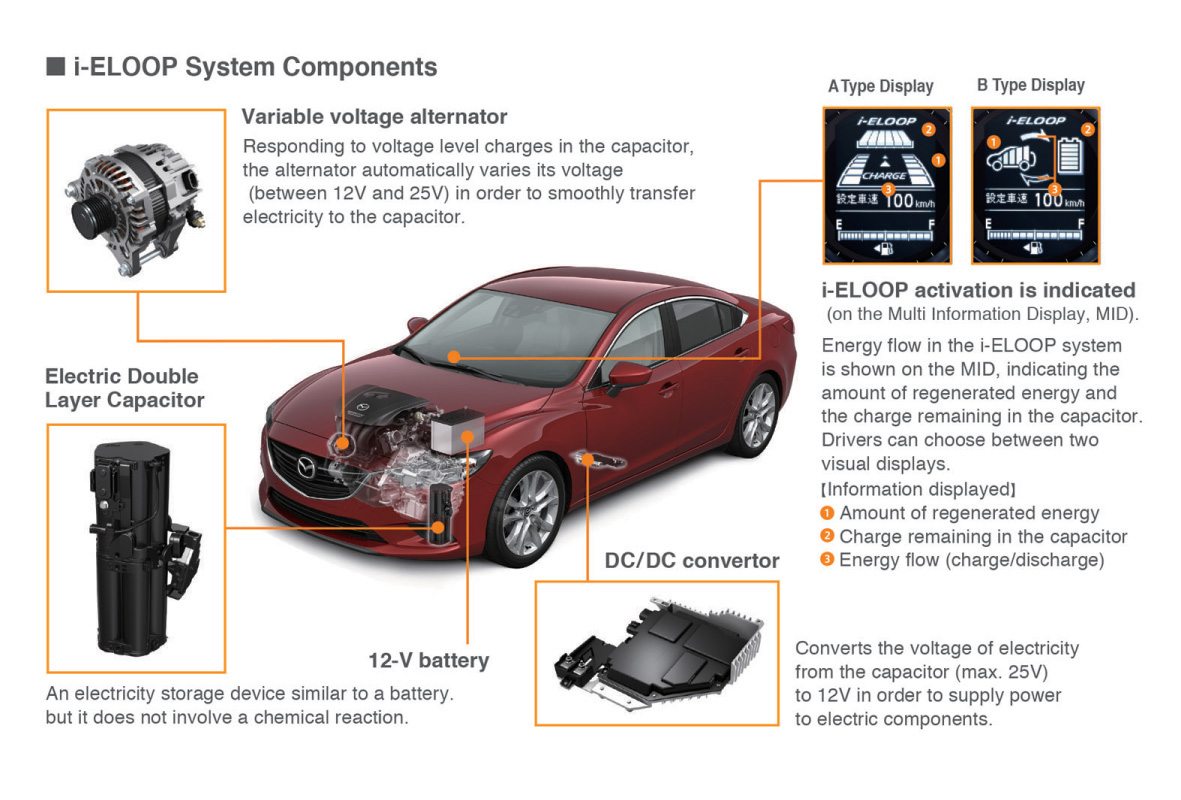 Courtesy of Mazda North America Operations
Courtesy of Mazda North America Operations
Additional I-CAR Collision Repair News you may find helpful:
Related I-CAR Courses
-
Toyota/Lexus/Scion Position Statement: Pre- and Post-Repair System Scanning
Thursday, 28 July 2016
As the industry continues to ask if pre- and post-repair system scanning is necessary, Toyota/Lexus/Scion provides their answer.
-
Pre- and Post-Repair System Scanning Statements
Wednesday, 9 January 2019
Are you wondering if a particular OEM or organization has a published statement on pre-repair and post-repair scanning? We have compiled a list of most of the statements on the subject, so you can...
-
ADAS, Calibration, And Scanning Article Hotspot
Monday, 14 January 2019
Since advanced driver assistance systems (ADAS), scanning, and calibration first started becoming relevant, members of the collision repair industry have required as much knowledge as possible on...
-
Honda/Acura Position Statement: Pre- and Post-Repair System Scanning - UPDATE
Wednesday, 22 May 2019
Honda /Acura has updated their position statement on pre- and post-repair scanning to give more clarification on what is expected for scanning.
-
Quickly Identifying Outer Quarter Panels w/Rolled Hem Flanges
Monday, 5 March 2018
The I-CAR best practice article, Recycled Outer Quarter Panels w/Rolled Hem Flanges has gotten a lot of interest from the collision repair industry. It’s important to know which vehicles are...
-
General Motors Position Statement: Pre- and Post-Repair System Scanning
Friday, 21 October 2016
As the industry continues to ask, are pre- and post-repair scans necessary, General Motors provides their answer.
-
Restraints Wiring Repairs
Monday, 23 May 2016
Over the past few months, we've been sharing OEM position statements on restraints wiring repairs. Now we're bringing them all together in one place for easy reference.
-
BMW Position Statement: Pre- and Post-Repair System Scanning - UPDATE
Friday, 10 April 2020
BMW has released a position statement related to pre- and post-repair system scanning. The statement applies to All vehicles equipped with on board diagnostics II (OBD II).
-
FCA/Stellantis Position Statement: Pre- and Post-Repair System Scanning
Thursday, 9 June 2016
FCA/Stellantis has released a position statement related to pre- and post-repair system scanning.
-
Typical Calibration Requirements For Forward Radar Sensors
Wednesday, 12 October 2016
Technicians should be aware of what’s required to keep advanced driver assistance systems (ADAS) running safely after a collision. Whether that be aiming a camera, which can cause a system to not...
-
Bumper Cover Repair With ADAS: Genesis
Thursday, 27 February 2025
A simple bumper repair on a modern vehicle may not be as simple as it seems. New technologies like blind spot monitoring, adaptive cruise control, and other advanced driver assistance systems (ADAS)...
-
Bumper Cover Repair With ADAS: Hyundai - UPDATE
Thursday, 27 February 2025
A simple bumper repair on a modern vehicle may not be as simple as it seems. New technologies like blind spot monitoring, adaptive cruise control, and other advanced driver assistance systems (ADAS)...
-
I-CAR Repairers Realm: SATA New Equipment And Technologies - Now Available
Wednesday, 26 February 2025
I-CAR staff discussed recent developments in SATA equipment and technology.
-
Calibration Research Tips: Ford/Lincoln Park Assist Operation Check - UPDATE
Thursday, 20 February 2025
While searching for information on advanced driver assistance systems (ADAS) on an OEM repair information site, you may come across unique calibration procedures or events. These events can vary by...
-
Honda Has Released The 2026 Passport Body Repair News
Wednesday, 19 February 2025
Honda has released a Body Repair News bulletin for the 2026 Passport. This document contains at-a-glance information for this model.
-
GM Repair Insights: Fall 2024
Monday, 17 February 2025
The fall edition of General Motors (GM) Repair Insights magazine is now available.
-
Back-To-Basics: Vacuum Coolant Filler
Friday, 14 February 2025
Sometimes, going back to the basics can make the difference between a quality repair and a failed repair. Vacuum coolant fillers can cut down on comebacks as well as speed up an everyday process.
-
Straightening And Heat: Rivian
Thursday, 13 February 2025
A question often asked of the Repairability Technical Support (RTS) team is, "Can heat be used to straighten?" Several OEMs provide steel repairability matrices that provide heating times and...
-
Structural Straightening On Jaguar Land Rover Vehicles
Friday, 7 February 2025
What should you do when a damaged Jaguar Land Rover comes into your repair facility? Can it be straightened? What is a structural part? What type of equipment is required?
-
Back-To-Basics: Plug Weld Prep Using A Spot Blaster
Thursday, 6 February 2025
Sometimes going back-to-basics can make the difference between a quality repair and a failed repair. Plug weld prep is not only a key factor in a successful repair but also in productivity.
- 2025
- February 2025 (11)
- January 2025 (12)
- 2024
- December 2024 (8)
- November 2024 (11)
- October 2024 (13)
- September 2024 (10)
- August 2024 (12)
- July 2024 (12)
- June 2024 (9)
- May 2024 (13)
- April 2024 (12)
- March 2024 (12)
- February 2024 (12)
- January 2024 (10)
- 2023
- December 2023 (8)
- November 2023 (12)
- October 2023 (11)
- September 2023 (11)
- August 2023 (12)
- July 2023 (9)
- June 2023 (11)
- May 2023 (12)
- April 2023 (11)
- March 2023 (12)
- February 2023 (10)
- January 2023 (11)
- 2022
- December 2022 (11)
- November 2022 (12)
- October 2022 (11)
- September 2022 (13)
- August 2022 (11)
- July 2022 (10)
- June 2022 (13)
- May 2022 (11)
- April 2022 (12)
- March 2022 (10)
- February 2022 (11)
- January 2022 (13)
- 2021
- December 2021 (13)
- November 2021 (11)
- October 2021 (13)
- September 2021 (14)
- August 2021 (12)
- July 2021 (15)
- June 2021 (17)
- May 2021 (14)
- April 2021 (14)
- March 2021 (21)
- February 2021 (15)
- January 2021 (14)
- 2020
- December 2020 (13)
- November 2020 (17)
- October 2020 (12)
- September 2020 (14)
- August 2020 (11)
- July 2020 (18)
- June 2020 (16)
- May 2020 (14)
- April 2020 (20)
- March 2020 (12)
- February 2020 (13)
- January 2020 (14)
- 2019
- December 2019 (13)
- November 2019 (19)
- October 2019 (25)
- September 2019 (20)
- August 2019 (22)
- July 2019 (23)
- June 2019 (20)
- May 2019 (19)
- April 2019 (20)
- March 2019 (21)
- February 2019 (18)
- January 2019 (18)
- 2018
- December 2018 (19)
- November 2018 (19)
- October 2018 (17)
- September 2018 (16)
- August 2018 (21)
- July 2018 (20)
- June 2018 (21)
- May 2018 (17)
- April 2018 (19)
- March 2018 (22)
- February 2018 (15)
- January 2018 (20)
- 2017
- December 2017 (13)
- November 2017 (15)
- October 2017 (19)
- September 2017 (20)
- August 2017 (20)
- July 2017 (18)
- June 2017 (20)
- May 2017 (19)
- April 2017 (13)
- March 2017 (18)
- February 2017 (10)
- January 2017 (12)
- 2016
- December 2016 (9)
- November 2016 (14)
- October 2016 (21)
- September 2016 (10)
- August 2016 (11)
- July 2016 (8)
- June 2016 (10)
- May 2016 (7)
- April 2016 (11)
- March 2016 (12)
- February 2016 (11)
- January 2016 (8)
- 2015
- December 2015 (9)
- November 2015 (7)
- October 2015 (9)
- September 2015 (7)
- August 2015 (11)
- July 2015 (7)
- June 2015 (5)
- May 2015 (7)
- April 2015 (8)
- March 2015 (8)
- February 2015 (9)
- January 2015 (10)
- 2014
- December 2014 (12)
- November 2014 (7)
- October 2014 (11)
- September 2014 (10)
- August 2014 (9)
- July 2014 (12)
- June 2014 (9)
- May 2014 (12)
- April 2014 (9)
- March 2014 (6)
- February 2014 (1)
- January 2014 (26)
